What's New
Displaying results 1771 - 1780 of 4924
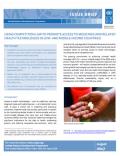
Resource | Laws and Policies,
Competition law is an important policy tool that LMICs can use to protect consumer welfare and promote industrial and economic development. It aims to restrict unfair business practices, and promote quicker introduction and increased availability of health technologies. The issue brief highlights key aspects of using competition law to promote access to health technologies from UNDP’s landmark publication “Using Competition Law to Promote Access to Health Technologies: A guidebook for low- and middle-income countries.” The issue brief intends to be a resource for policymakers, national competition authorities, national procurement agencies, health authorities, civil society and other actors who have an interest in understanding the critical role of competition authorities in promoting access to health technologies.
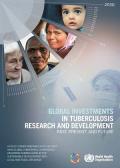
Resource | Publications,
This policy paper shows how countries and stakeholders can take resolute actions to promote the R&D required to successfully reach the SDG target of ending the TB epidemic by 2030. The paper concludes by recommending steps governments and other stakeholders can take at the national and international levels to create research-enabling environments and increase funding for TB research; namely, the creation of a global strategy for TB R&D and the deployment of innovative, collaborative financing mechanisms.
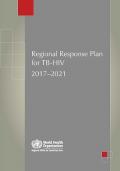
Resource | Tools,
People living with HIV are 29 times (26–31) more likely to develop tuberculosis (TB) disease compared with people without HIV and living in the same country. TB is a leading cause of hospitalization and death among adults and children living with HIV, accounting for one in five HIV-related deaths globally.
This Regional Response Plan for TB-HIV 2017–2021 is a product of wide consultation with national and regional partners. It is intended to provide strategic directions to countries on prioritizing interventions and setting reasonable targets. It will guide how interventions can be further expanded and made efficient by strengthening health systems,
and improving coordination and synergy to ensure universal access and equity.
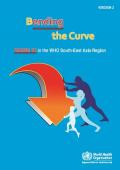
Resource | Publications,
Tuberculosis (TB) remains the largest cause of death and suffering due to any communicable disease among the most productive groups in the World Health Organization’s South-East Asia Region. Nearly half of global TB cases emerge in this Region, which is home to one fourth of the total population. It is estimated that TB and TB-HIV co-infection caused 3 deaths every 2 minutes in the Region in 2015. These deaths were entirely preventable with proper treatment of all TB patients, including those infected with drug-resistant strains.
The WHO End TB strategy and corresponding Regional Strategic Plan to end TB targets reductions to the extent of 90% in deaths, and 80% in TB incidence by 2030. This is in alignment with the Sustainable Development Goals (SDGs) to which all countries have committed.
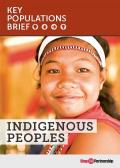
Resource | Fact Sheets,
The world’s 370 million indigenous peoples face a plethora of issues caused by displacement, dispossession, loss of livelihood, systematic racism and abuse, and lack of recognition. Further hindering an adequate response to these challenges, there is a pervasive lack of data about indigenous peoples concerning health and other key development indicators. Data that are available show a prevalence of extreme poverty and severe health disparities that include tuberculosis (TB).
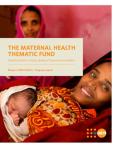
Resource | Publications,
This report highlights the key results achieved over Phase II of the Maternal Health Thematic Fund (MHTF), from 2014 to 2016, structured around the three cross-cutting principles of accountability, equality of access and quality of care, as outlined in the MHTF Business Plan Phase II (2014-2017). The report foregrounds the MHTF’s role in supporting health systems strengthening, and addresses its catalytic nature, its promotion of sustainability and its strong emphasis on advancing innovation. A vision and direction are outlined for the third phase of the MHTF, which will be further elaborated in a forthcoming Business Plan Phase III (2018-2021).
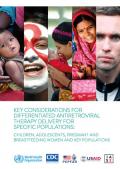
Resource | Publications,
This document provides key considerations on when clinically stable children, adolescents and women who are pregnant or breastfeeding as well as members of key populations (people who inject drugs, sex workers, men who have sex with men, transgender people and people living in prisons and closed settings) can benefit from access to ART services for clinically stable clients, including less frequent clinic visits and multi-month refills for ART and other medications. The guidance provides the rationale and the approach to expand differentiated ART delivery to populations of people living with HIV who previously may not have been considered “eligible” for ART delivery models for clinically stable clients.
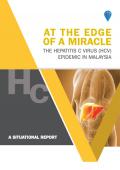
Resource | Publications,
When we began this project, we realised that there was little consolidated information on the HCV situation in Malaysia, whether epidemiological reports, patient voices, or the diagnostics and treatment environment. This report seeks to fill that gap and be a useful tool for clinicians, civil society, policy makers, politicians, and other stakeholders working towards access and affordability of HCV diagnostics and medication.
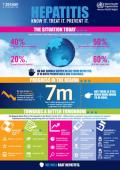
Resource | Infographics,
Infographic on hepatitis produced by WHO Regional Office for the Western Pacific.
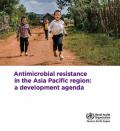
Resource | Publications,
This report provides in-depth technical discussions in areas that have direct implications to the containment of antimicrobial resistance (AMR) as a development agenda. The report is organized in five chapters which served as the technical background documents for the Biregional Technical Consultation on AMR in Asia, 14-15 April 2016.





